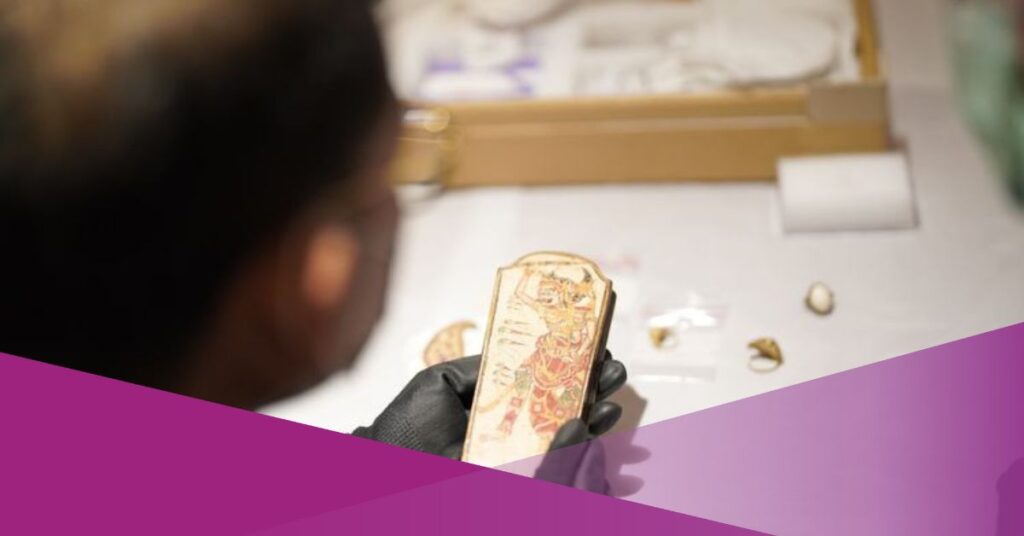When our body’s temperature rises above its normal range, we experience fever. While it is frequently a sign that our immune system is fighting an infection, it can leave us exhausted and uneasy. Fortunately, there are several home remedies that can help with fever relief. Traditional remedies have been used for generations in Indonesian culture to effectively combat fevers.
These natural concoctions and techniques are frequently passed down from generation to generation, providing a safe and cost-effective alternative to over-the-counter medications. This article will look at some traditional Indonesian fever remedies that have stood the test of time.
Introduction
Explanation of combatting fever naturally
Fighting fever naturally entails taking steps to lower the body’s temperature and strengthen the immune system. Staying hydrated by drinking plenty of fluids such as water, herbal teas, or clear broths is one effective method. Rest is necessary for the body to heal and recover. Immune-boosting foods like garlic, ginger, and citrus fruits can help you fight infections. Cooling down the body with a cool compress or a lukewarm bath can also provide relief.
Mention of Indonesian culture and traditional remedies
Indonesia is well-known for its rich cultural heritage and traditional healing methods. Indonesian culture is diverse and distinct, influenced by a wide range of ethnic groups and religions. Traditional remedies are important in Indonesian culture, with locals treating various ailments with natural ingredients and techniques passed down through generations. These treatments frequently include herbal medicine, massages, and spiritual practices rooted in Indonesian traditions and beliefs.
Understanding Fever
Definition of fever and its symptoms
Fever is a brief increase in body temperature caused by an illness or infection. The average body temperature is around 98.6°F (37°C), but it can rise to 104°F (40°C) or higher during a fever. Sweating, chills, headache, muscle aches, and fatigue are common fever symptoms. A fever can also cause loss of appetite, dehydration, and irritability in some people. Fever is the body’s natural defence against infection and is generally not dangerous unless it becomes excessively high or prolonged.
Explanation of the different causes of fever
Viral infections
Viral infections are caused by a wide range of viruses, from the common cold to more serious illnesses like influenza or COVID-19. Fever is one of the most common symptoms of viral infections, and it is caused by the immune system’s response to the virus’s presence in the body. Fever kills the virus by raising body temperature, making it more difficult for the virus to survive and replicate. As a result, fever can be viewed as a protective mechanism against viral infections.
Bacterial infections
One of the many causes of fever is bacterial infection. Infections occur when bacteria enter the body and multiply, causing harm and activating the immune system. The various causes of fever caused by bacterial infections can differ depending on the type of bacteria involved. Respiratory infections, urinary tract infections, skin infections, and gastrointestinal infections are all common causes. To avoid complications and the spread of bacteria, it is critical to identify and treat bacterial infections as soon as possible.
Inflammatory conditions
Inflammatory conditions refer to disorders characterized by inflammation, which is the body’s response to injury or infection. There are various causes of fever and inflammation, including immune system abnormalities, infections, injuries, and certain autoimmune disorders. When the body detects an invader or damage, it releases chemicals that promote inflammation and elevate body temperature. This inflammatory response helps the body fight off pathogens and heal damaged tissues. Understanding the different causes of fever is crucial in diagnosing and treating inflammatory conditions effectively.
Importance of treating fever promptly
Fever is a common symptom that can be caused by an infection, inflammation, or medication side effects. To avoid potentially serious complications, fever must be treated as soon as possible. Fever treatment reduces discomfort and pain, improves overall well-being, and promotes faster recovery. Furthermore, prompt treatment can halt the progression of underlying conditions and lower the risk of complications. As a result, early intervention and appropriate fever management are critical for ensuring a positive health outcome.
Indonesian Home Remedies for Fever
Turmeric and ginger tea
Explanation of the anti-inflammatory properties
Turmeric and ginger tea has powerful anti-inflammatory properties to become a fever remedy. Turmeric contains curcumin, a compound that has been extensively researched for its ability to reduce inflammation in the body. It aids in the inhibition of inflammatory molecule production and can help to alleviate symptoms of conditions such as arthritis, irritable bowel syndrome, and even chronic pain.
Ginger, on the other hand, contains gingerol, a potent antioxidant with anti-inflammatory properties. Turmeric and ginger, when combined in a warm and soothing tea, create a natural remedy that can provide relief and promote overall health.
Preparation instructions
To prepare turmeric and ginger tea, start by boiling water in a pot. Add one teaspoon of grated ginger and a pinch of turmeric powder. Let it simmer for 10 minutes to allow the flavors to infuse. Strain the tea and add honey or lemon juice for taste if desired. This soothing tea not only tastes good but also has anti-inflammatory and antioxidant properties, making it a beneficial choice for overall health and well-being.
Betel leaf wrap
Benefits of betel leaf for reducing fever
Betel leaf, which is commonly used to wrap betel quid, has been found to have potential fever remedies. The leaf contains a number of active compounds that have antipyretic properties, which help to lower body temperature and relieve fever symptoms. Its natural properties, which include antimicrobial and anti-inflammatory properties, make it an effective fever remedy. To relieve fever and promote overall wellness, the betel leaf wrap can be applied externally to the body or consumed as a tea.
Instructions on how to make a betel leaf wrap
Begin by purchasing fresh betel leaves from a local grocery store. After that, thoroughly wash the leaves and pat them dry with a paper towel. Then, in a mixing bowl, combine grated coconut, chopped nuts, and sweet honey. Fold a betel leaf into a wrap with a spoonful of the filling in the centre. Using a toothpick, secure the wrap. Repeat the process with the remaining leaves. As a tasty and refreshing appetiser, serve the betel leaf wraps.
Lime and honey mixture
Explanation of the immune-boosting properties
The lime and honey mixture is known for its immune-boosting properties, and it’s suitable for fever remedies. Lime is rich in vitamin C, which plays a pivotal role in strengthening the immune system. It helps in the production of white blood cells that fight off infections and diseases. Honey, on the other hand, contains antibacterial and antiviral properties that promote a healthy immune response. When combined, lime and honey create a powerful concoction that enhances the body’s natural defence mechanisms and aids in maintaining overall well-being.
Recipe for lime and honey drink
To prepare a delicious lime and honey drink, start by squeezing the juice of two fresh limes into a glass. Next, add a tablespoon of pure honey and mix well to create a tangy and sweet lime and honey mixture. For an extra refreshing twist, you can also add a few mint leaves or a splash of sparkling water. Serve this refreshing drink chilled or over ice and enjoy the perfect balance of citrusy lime and the natural sweetness of honey.
Herbal compress
Introduction to traditional herbal remedies
For centuries, traditional herbal remedies have been used to treat various ailments and promote overall health and well-being. The use of herbal compresses is a typical traditional practice. Herbal compresses are made by combining medicinal herbs with hot water or oil and then applying them to the body.
The heat from the compress helps the medicinal properties of the herbs to be released, allowing them to be absorbed by the skin and provide relief. This ancient practice is still valued for its natural approach to healing and effectiveness in treating a variety of ailments.
Steps for creating and using a herbal compress
To create a herbal compress, start by selecting the herbs you want to use, such as lavender or chamomile. Next, heat a pot of water and add the herbs to create a strong infusion. Strain the liquid and soak a clean cloth in the infused water. Wring out any excess liquid and apply the cloth to the desired area of the body. Leave the compress on for 10-15 minutes and repeat as needed. The herbal compress can provide relaxation, relieve muscle pain, and improve circulation.
Benefits and Safety Considerations
Natural fever remedies have several advantages, including gentleness, fewer side effects, and a holistic approach. They are appropriate for children, the elderly, and people with sensitive systems, and they are frequently available and accessible. Natural remedies are commonly made from natural ingredients such as herbs, spices, and plants, making them more environmentally friendly and sustainable.
However, there are risks and contraindications, such as allergic reactions, medication interactions, a lack of standardisation, and a lack of scientific evidence. Dosage uncertainty can also arise as a result of determining the proper dosage. Consultation with a healthcare professional is essential for accurate diagnosis, personalised treatment, monitoring and follow-up, identifying potential contraindications, ensuring safety, and recognising serious conditions. Individuals can make informed decisions about their health and safety by understanding these risks and contraindications.
Conclusion
Indonesian culture provides a plethora of home fever remedies for fever relief, combining traditional healing practices with gentle yet potent effects. These remedies are long-lasting, gentle, and effective, but they are not without risks and contraindications. A healthcare professional’s advice is required for personalised and safe treatment plans. Individuals can promote healing, wellness, and appreciation for various healthcare approaches around the world by combining traditional Indonesian remedies with modern medical expertise.
Check out these articles to know more about health and wellness in Indonesia:











































